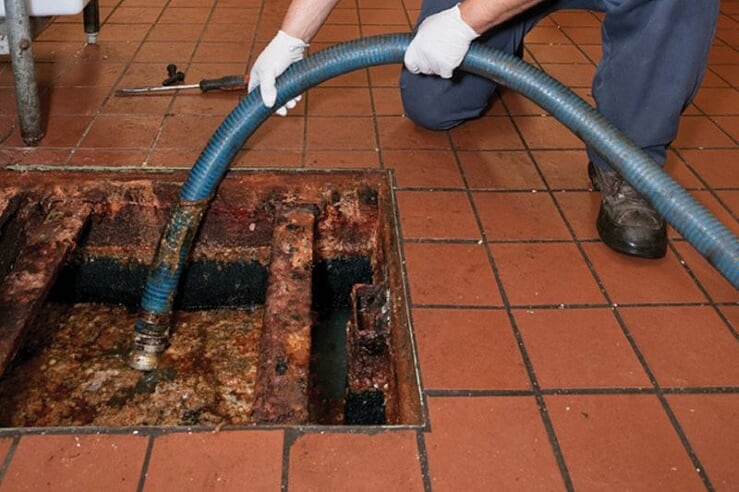
Fats, Oils, and Grease: The Nitty-Gritty of Grease Trap Maintenance
Grease traps are an essential component of any commercial kitchen, helping to prevent fats, oils, and grease (FOG) from entering the sewage system and causing blockages and pollution. However, to ensure that grease traps function effectively, they need to be regularly cleaned and maintained. In this blog, we’ll discuss the importance of grease trap cleaning and the best practices to keep your kitchen running smoothly.
What is a grease trap?
A grease trap is a plumbing device that intercepts FOG from wastewater and allows it to cool and solidify. As wastewater enters the trap, it passes through a series of baffles that slow down the flow and allow the grease to separate from the water. The trapped grease is then stored in the trap until it can be removed and disposed of properly.
Why is grease trap cleaning important?
Grease traps need to be cleaned regularly to prevent FOG from accumulating and causing blockages. Over time, FOG can build up and harden, reducing the capacity of the trap and making it less effective. In addition, if a grease trap becomes too full, the FOG can overflow into the sewer system, causing clogs and environmental damage. Regular cleaning is also important for maintaining the health and safety of your kitchen staff and customers, as a dirty grease trap can emit foul odors and attract pests.
How often should you clean your grease trap?
The frequency of grease trap cleaning depends on the size of the trap and the volume of FOG produced by your kitchen. In general, smaller grease traps (less than 1,000 gallons) should be cleaned at least every 90 days, while larger traps may need to be cleaned more frequently. It’s important to keep accurate records of when your grease trap was last cleaned and to schedule regular cleanings to avoid any potential issues.
Best practices for grease trap cleaning
- Hire a professional: Grease trap cleaning is a messy and potentially hazardous job, and it’s best left to the professionals. Look for a reputable company that specializes in grease trap cleaning and has experience working with restaurants and commercial kitchens.
- Use eco-friendly products: When cleaning your grease trap, make sure to use eco-friendly products that won’t harm the environment or your plumbing system. Avoid harsh chemicals and solvents that can damage your pipes or contaminate the water supply.
- Dispose of waste properly: After cleaning your grease trap, make sure to dispose of the waste properly. FOG should never be dumped down the drain or disposed of in the trash. Instead, it should be collected in a separate container and disposed of according to local regulations.
- Inspect your grease trap regularly: Regular inspections can help you catch potential issues before they become major problems. Make sure to inspect your grease trap and surrounding plumbing for signs of damage or wear and tear.
In conclusion, regular grease trap cleaning is an essential part of maintaining a safe and efficient commercial kitchen. By following best practices and working with a professional cleaning company, you can ensure that your grease trap is functioning effectively and protecting the environment.
AL Goma is here for you. We have fully qualified professionals who use modern equipment for cleaning. Also, AL Goma Cleaning provides the services like Water Tank Cleaning, Grease Trap Cleaning Kitchen Exhaust Cleaning, Drain Line Jetting and Unblocking, Sewage Tank Cleaning, Septic Tank Cleaning, Sump Pit Tank Cleaning, Manhole Cleaning, Garbage Chute Cleaning. Please contact us to book your appointment.
Gomadss Editor